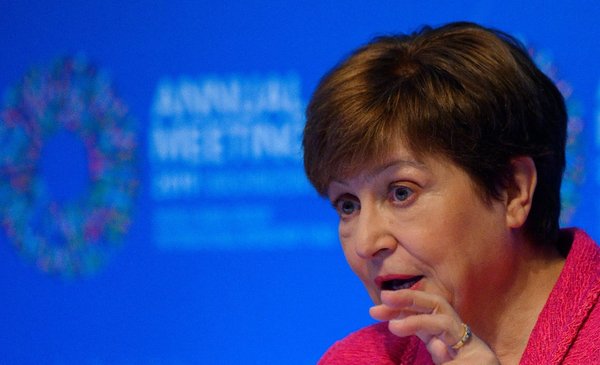The International Monetary Fund (IMF) on Tuesday maintained its global growth forecast for 2022 at 3.2%but lowered that for 2023 to 2.7% (-0.2 percentage points from July) due to the impact of persistent inflation and the war in Ukraine.
In the case of Uruguay, The international organization raised its growth forecast for 2022 to 5.3% (versus 3.9% in April), while for 2023 it forecasts GDP expansion to be 3% (versus 3.6% in April) .
In the case of inflation, andhe IMF expects it to close this year at 9.1% and then slow down to 7.8% by 2023, still almost 2 points above the ceiling of the target range (6%). Finally, in the case of the unemployment rate does not expect major changes for both years with a rate of 7.9% for both 2022 and 2023.
China with the lowest growth in four decades
The IMF also lowered its growth forecasts for China this year and for 2023, in a context of a slowdown in its economy, exacerbated by the maintenance of health restrictions and a crisis in the real estate sector. China is the main export destination for Uruguayan goods and is responsible for 60% of beef purchases.
The IMF projects that the GDP of the second world economy will expand 3.2% this year and 4.4% next year, according to its quarterly world forecasts, that is, a reduction of 0.1 and 0.2 percentage points with respect to its July report.
If this forecast is confirmed for this year, the country would experience the lowest growth in four decades, excluding the first year of the pandemic, according to government and World Bank data.
The projection for this year is below the government’s growth target of 5.5%, a figure that several analysts consider unattainable.
Last year, China registered a growth of 8.1%, although this figure started from a modest base in the previous year due to the impact of the covid pandemic on the economy in 2020.
Secondly, The United States will grow 1.6% this year, that is, 0.7 percentage points less than forecast in July, and its GDP will continue to fall to 1% in 2023unchanged from what was forecast three months ago, the IMF announced on Tuesday at its annual meetings.
Latin America
For 2022, the estimate for Latin America and the Caribbean is 3.5% GDP growth, that is, an increase of 0.5 percentage points (pp) compared to the July forecasts, while for 2023 it is 1.7% (-0.3 pp), announced the IMF on the occasion of its annual meetings in Washington.
The region’s improvement this year is due to stronger-than-expected activity in the first half of 2022.
“The favorable prices of raw materials, the still advantageous external financing conditions, and the normalization of activities in the (human) contact-intensive sectors” have boosted growth, he points out.
Industry that requires high direct person-to-person contact includes, for example, restaurants, retail stores, or public transportation.
However, the IMF forecasts a slowdown in late 2022 and 2023 as “growth weakens in partner countries, financial conditions tighten, and commodity prices moderate.”
Brazil and Mexico, the first and second regional economies respectively, grow less than average but come out well in the forecasts compared to other emerging nations.
For Brazil, in full campaign for the presidential ballot on October 30, the IMF predicts a growth of 2.8% for 2022 (+1.1 pp compared to the July forecast) and 1% in 2023 (-0.1 pp).
with AFP

















